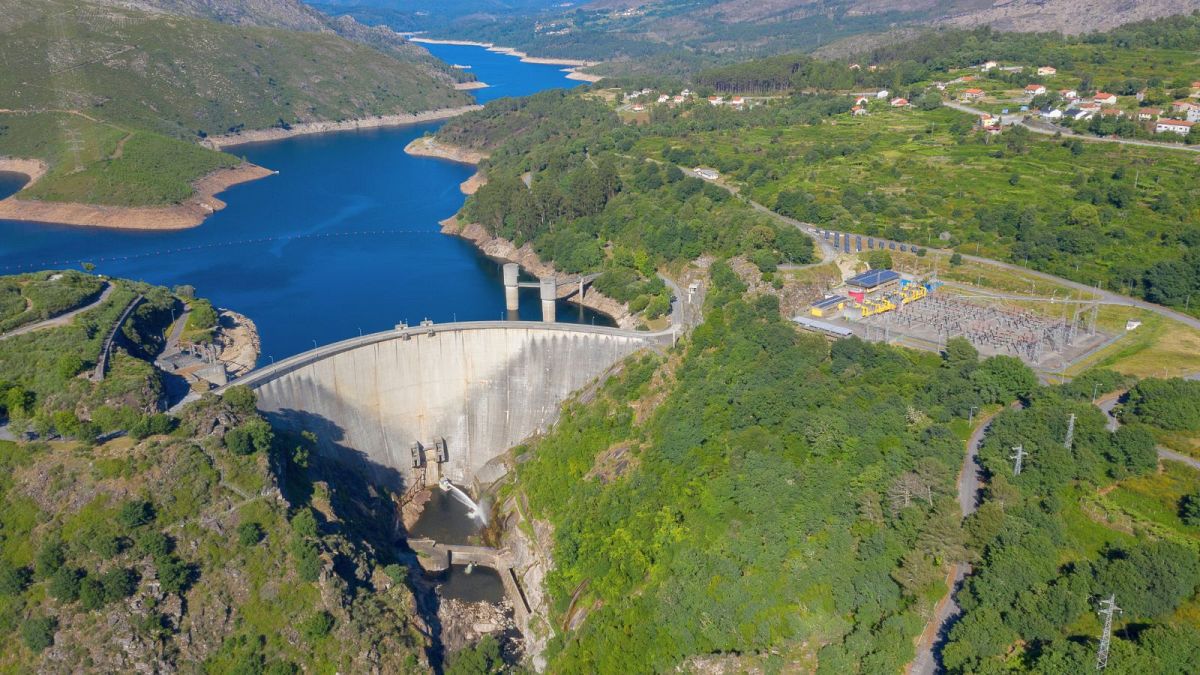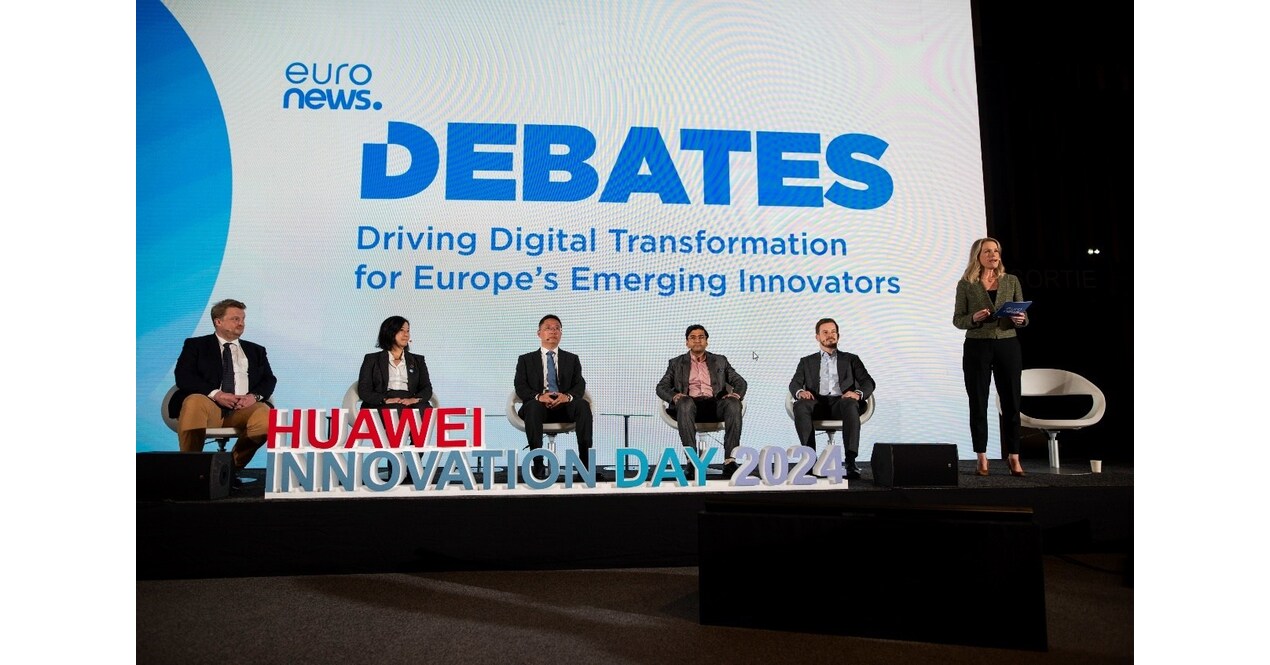Why a wetter Europe doesn’t necessarily mean more hydropower

Despite increased potential in some countries, hydroelectric plants are having to contend with more extreme conditions.
Europe was around seven per cent wetter than average in 2023 – during the world’s hottest year on record.
Hot air retains more moisture, which increases precipitation and can cause widespread flooding. One third of rivers across Europe breached a ‘high’ flood threshold last year, according to the EU climate agency’s latest report.
In some areas, fuller rivers strengthened the hand of one renewable: hydropower. Potential for run-of-river hydropower generation was above average across much of Europe for the year as a whole, Copernicus says.
With this form of hydropower, a portion of the river is diverted through a canal or a penstock to spin a turbine and generate electricity.
But does a wetter Europe necessarily lead to more hydropower? Here’s what the experts say.
Will Europe be wetter due to climate change?
First things first, is Europe’s wet weather trend expected to continue?
According to climate scientists, extreme precipitation is set to increase with global warming across most of Europe, except the Mediterranean. There will be more rainfall during northern European winters and less in Mediterranean summers.
This mixed picture emerged last year, with Spain, Portugal and southern France drier than average.
Increased rainfall and flooding is only one consequence of throwing our water cycle into disarray. A 1-in-500 year drought hit Europe in 2022, denting hydropower generation.
Neither extreme is good for run-of-river hydropower. Low flow conditions mean there is too little water to generate sufficient electricity, while flood events risk damaging the equipment.
But, explains Copernicus Climate Change Service (C3S) scientist Shaun Harrigan, “in regions and seasons where river flow increases moderately, then there would be increased hydropower generation potential.”
So that could mean more run-of-river hydropower – the kind that is more directly linked to climate variability – in parts of northwest Europe.
Which European countries have the most hydropower?
Europe’s network of hydropower plants delivered 637.23 terawatt hours (TWh) of renewable energy in 2023, according to the International Hydropower Association (IHA). That’s enough to cover around 163.4 million European households.
French and Portuguese utility companies Électricité de France (EDF) and Energias de Portugal (EDP) are the “biggest hitters” in Europe, while the UK has recently committed to developing more pumped storage hydropower (PSH).
PSH is described as the world’s largest battery. It pumps water from a lower source to an upper reservoir and releases it through a turbine during times of high electricity demand. And it’s this technology that the industry is investing most of its hopes in.
“The greatest challenges for the European grid are modernisation of [existing] plants and the potential for their conversion into pumped storage facilities to support management of a flexible grid powered by a mixture of hydropower, wind and solar,” a spokesperson for IHA says.
Although there is some potential left for run-of-river systems, they say, like in the Danube River, the time is ripe for PSH growth. Austria is considered a leader in constructing these water batteries. In Albania, Norwegian energy giant Statkraft is planning to expand its hydropower fleet on the Devoll river cascade, by adding a new PSH facility.
Can hydropower plants withstand worse flooding?
In August last year, days of heavy rain overwhelmed the Braskereidfoss hydroelectric power plant on Norway’s mighty Glåma River. Its concrete dam partially collapsed, leading to further flooding and the displacement of some 5,000 people downstream.
But the IHA maintains that hydropower is one of the most climate-resilient forms of electricity.
“In many locations, increased water flow can be better managed through powered infrastructure such as hydropower, thanks to its water retention capabilities,” an IHA spokesperson tells Euronews Green.
“Not only are most facilities robust for many decades, most dams are built as flood and drought control plus irrigation.”
Modernisation is key, they add, as “a more flexible plant is a more resilient one.”
In the case of the Norwegian power plant, hatches that were supposed to open automatically if too much water collected behind the dam failed to work as designed.
With climate extremes increasing in such a variable way across Europe, the required upgrades can vary even between the same type of hydropower plants in different countries.
“Modern technologies such as digitalisation, improved forecasting and satellite monitoring, hybridisation and variable speed turbines, will help the sector navigate extreme meteorological conditions,” the IHA spokesperson explains.
“Facilities equipped with larger reservoirs, capable of storing substantial volumes of water such as reservoir and pumped storage hydropower, will play a crucial role in mitigating the effect of extreme events such as drought and flooding.”
How can hydropower plants be sustainable?
While there might be more potential for ‘water batteries’, especially in northwest Europe, not everyone is convinced it’s the best route to clean energy.
Environmentalists are concerned about the impact of new dams on Europe’s waterways, pointing out that the ecosystems it impinges on are not renewable.
“Europe has the most fragmented rivers in the world,” Claire Baffert, Senior Water Policy Advisor at WWF Europe previously told us, explaining that migratory fish are particularly impacted. “And this is because of all the dams that have been built for hydropower.”
To help buff the green credentials of hydropower projects, the Hydropower Sustainability Alliance has developed a global certification scheme that the industry can check itself against.
Plans should avoid negative biodiversity impacts, for example, and take water supplies into account.
Even the best-laid plans, however, are being projected into an increasingly unstable future.
“Climate change is having a profound impact on the water cycle,” C3S scientist Harrigan says.
“While we might be able to limit or even reverse some disruption, some changes might be irreversible – we do not yet fully understand the consequences of pushing the water cycle into unchartered territory.”
Related
UK army chief: We’re ready to fight Putin in Eastern…
Eastern European NATO members including Latvia and Estonia have nervously eyed Russia's full-scale invasion of Ukraine, while Finland, which borders Russia t
Biden’s last-minute permission to strike deep inside Russia divides Europe
The European Union and US President Joe Biden are taking unprecedented steps to bolster Ukrainian and European defences following Donald Trump’s November 5 pr
Europe is gaslighting itself about its energy woes
Since Russia’s invasion of Ukraine triggered a European energy crisis, the bloc hasn’t been completely honest about its dire situation. It misinterpreted wh
Russia rejects claims of sabotage on undersea cables in Europe,…
The Danish military is monitoring a Chinese ship in its waters just days after two underwater telecommunication cables were cut in a possible act of sabotage, a












